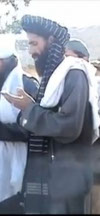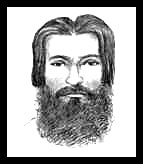Afghan and US forces killed scores of Haqqani Network fighters during assaults on two bases in the mountains in eastern Afghanistan.
The first attack took place on Aug. 28 when a joint US and Afghan force assaulted a fortified Haqqani Network base located in the mountains of the Urgun District in Paktika province along the Pakistani border. The US military said “a large number of hostile militants” were killed during a daylong assault on what the US military described as a “logistics base and safe haven for foreign fighters.”
US and Afghan forces called in air support to help defeat enemy counterattacks. The joint forces found a series of bunkers, buildings, and weapons caches, which included anti-aircraft artillery pieces and other heavy weapons, in the mountain hideout.
The second attack took place late at night on Aug. 29 in the Spera district in Khost province. The joint US and Afghan force killed 35 Haqqani Network fighters during the assault on a hideout in the district, the Khost provincial police chief told Xinhua. Security forces also found weapons and food caches at the hideout.
The weekend raids occurred just days after a controversial strike on a clinic in Paktia province. On Aug. 27, US and Afghan troops killed 12 Haqqani fighters and captured seven more during a battle in the Sar Hawza district in Paktia province. One US soldier was also killed during the fighting.
The Haqqani fighters were in a clinic as their commander, Mullah Muslim, was being treated for battle wounds received during fighting on Afghanistan’s Election Day. Muslim and six of his fighters were captured during the clash. US forces called in an Apache helicopter gunship strike on the medical clinic to kill the remaining Taliban fighters after confirming that no civilians were in the building.
|
|
|
Image of Haqqani Network military commander Mullah Sangeen Zadran. Obtained by The Long War Journal from a Taliban propaganda tape. |
Operations against the Haqqanis have intensified over the past two months
The US military has heavily targeted the Haqqani Network since late May. US and Afghan forces have conducted raids against the Haqqani Network on a near-daily basis over the timeframe. Overall military commander Sirajuddin Haqqani, as well as Mullah Sangeen Zadran, Siraj’s dangerous right hand man, have been directly targeted during raids and strikes in both Afghanistan and Pakistan.
US and Afghan forces have taken out several large Haqqani network bases. On May 28, US and Afghan forces assaulted a heavily defended fort in the mountains in the Wor Mamay district in the eastern province of Paktika near the Pakistani border. Twenty-nine Haqqani Network fighters, including six failed suicide bombers, were killed during the raid. Sangeen, the target of the raid, escaped.
On July 17, US and Afghan forces took out an “enemy encampment” situated in the remote reaches of Paktia province. A large number of Haqqani Network fighters were killed in the assault.
The US carried out the raid the same day Sangeen threatened to kill a US soldier unless Coalition forces ended operations in two districts in Paktika and Ghazni provinces in eastern Afghanistan. The soldier was captured June 30 after walking away from his combat outpost in Paktika province.
The US military has issued flyers in Paktia and Ghazni provinces, urging Afghans to provide intelligence on the location of the missing soldier. But the soldier may have been moved already into North Waziristan, a US intelligence official familiar with the search told The Long War Journal.
Siraj and Sangeen were also the targets of US airstrikes in North and South Waziristan in June and August. Siraj was the target of a US airstrike in South Waziristan in June after the US received information he was attending a high-level al Qaeda and Taliban meeting to advise a Pakistani Taliban leader on his options against the Pakistani military [see LWJ report Senior Taliban leaders targeted in yesterday’s Predator strikes].
The US also attempted to kill Sangeen in June as he attended a funeral of a mid-level Taliban commander in South Waziristan.
Siraj was also the target of the Aug. 21 Predator strike on a Haqqani Network compound in North Waziristan.
Background on the Haqqani Network, one of the most dangerous groups in Afghanistan
The US military has been targeting the Haqqani Network in Afghanistan and across the border in Pakistan since early 2008. US special operations forces have targeted the Haqqani leadership in multiple raids in Afghanistan, while the CIA has conducted a covert Predator air campaign against the network across the border in North Waziristan. Nearly half of the US Predator strikes in Pakistan during 2008 were aimed at the Haqqani Network and at al Qaeda leaders sheltering in their tribal areas.
“We want the Haqqanis to know we will hit them anywhere,” a senior US military intelligence official told The Long War Journal after the Sept. 8 strike on the Haqqani madrassa, known as the Manba Ulom.
The Manba Ulom madrassa was established by Jalaluddin Haqqani, the family patriarch who has close ties with Osama bin Laden. The madrassa was used in the 1980s to train mujahedeen to fight the Soviet Union in Afghanistan. After the US invasion of Afghanistan in 2001, the Haqqani family used the Manba Ulom madrassa as a training center and meeting place for senior al Qaeda leaders.
The Pakistani government closed the madrassa in 2002, but it was reopened in 2004. Since then, Taliban fighters and members of al Qaeda’s network have been known to shelter in the madrassa compound.
The madrassa serves as the headquarters for the Haqqani Network, while the network’s forward operating command center for Afghanistan is in the village of Zambar in the northern Sabari district of Khost province, Afghanistan. The network is active in the Afghan provinces of Khost, Paktia, Paktika, Ghazni, Logar, Wardak, and Kabul, and provides support to Taliban networks in Kunar, Nangarhar, Helmand, and Kandahar provinces.
The Haqqanis have extensive links with al Qaeda and with Pakistan’s military intelligence agency, the Inter-Service Intelligence, or ISI. These relationships have allowed the Haqqani Network to survive and thrive in North Waziristan. The Haqqanis control large swaths of North Waziristan, and run a parallel administration with courts, recruiting centers, tax offices, and security forces.
Siraj, a son of Jalaluddin, has risen in prominence over the past two years. He is believed to be the mastermind of the most deadly attacks inside Afghanistan, and is the senior military commander in eastern Afghanistan. The US military has described Siraj as the primary threat to security in eastern Afghanistan. On March 25, the US Department of State put out a $5 million bounty for information leading to the capture of Siraj.
Siraj is believed to be dangerous for his connections not only with the Afghan Taliban, but also with al Qaeda’s central leadership. His connections extend all the way to Osama bin Laden. Siraj actively recruits foreigners into the network and trains them to conduct suicide attacks in Afghanistan.
Just as the US has finally admitted that Taliban leader Mullah Omar and his senior commanders are running their Afghan operations from Quetta in Pakistan, the Haqqanis have been labeled as operating from Pakistan’s tribal areas.
“The Haqqani network remains one of the most lethal Taliban organizations operating out of Pakistan’s Federally Administered Tribal Areas,” the US military admitted in a recent press release.










11 Comments
I hate when this happens. Not. The Haqqanis need some death and destruction before they willingly leave the 7th century. It’s hard to reason with BARBARIANS. Nobody would care if they didn’t take their barbarianism across borders.
I wonder if they are taking more prisoners now
because thaey have used up the fools who are
ready to go to heaven right now!! I still believe
that carpet bombing is the answer, leave no
structure standing in the border area.
This is good news, but the general mood is beginning to sour on the war as casualties mount much like the Iraq war in 2006. Do you think the new “strategy” and increased troop presence is working in Afghanistan? Not that anyone has a crystal ball but I completed two tours in Iraq and had a good feeling the Patraes strategy would work there as we conducted FID operations on both tours. I am just trying to gauge the mood of people that are in the know as are most of the readers of this website are and of people who are actually on the ground.
I have a question. Is the U.S aim to neutralize its enemies and thereafter introduce democracy replacing the former way of government or neutrilizing enemies just to replace the way of government with democracy.
When the foe is slain is there then a mandatory rule or law to change what those people believe in? There must only be democracy nothing else?
Nissonic-
I think the goal isn’t to introduce democracy, not anymore. That is the neoconservative ideology.
The Afghans wrote their own constitution.
Obama, Gates, and Holbrooke want a stable government that is not corrupt. In counter-insurgency wars government corruption has a strong negative effect for our side because the people don’t trust the government. With the present Afghan government we have a serious problem with corruption. I don’t envy Holbrooke’s position.
Its impossible to have democracy in Afghnisation. The ethnic like Uzbeks, Tajiks, Hazaras, Pashtuns…etc is more important than the national identity. It has always been like that. Dividing Afghanistan based on ethnic lines would be a wiser thing to do. Then one will have a smaller area to concentrate on .
Ron: It’s a shoot-the-moon kind of strategy the way its currently being run with an artificial time limit. Yes, it could very well work. If anybody could pull it off, we’ve certainly got the right people to do it in place.
Nissonic: I tend to agree with Zotz. I think the current US administration would be very happy to let the Talib (and the other inhabitants of the region) go on about their business, providing they turn over or turn in every upper level al-Q they can lay hands or eyes on.
Which after all, was all that W was demanding in the first place.
FORK
TAILED
DEVIL,
R
The Thunder Run has linked to this post in the blog post From the Front: 08/31/2009 News and Personal dispatches from the front and the home front.
Amazing to think that Jalaluddin Haqqani visited the White House as Reagan’s guest in the 1980’s.
Haqqani may now be the most dangerous terrorist in the world. He has close links to Uzbek, Dagastani, Chechen and Punjabi Taliban (Sipah al Sahaba, Lashkar e Jhanvi, Lashkar e Taiba, Jaish e Mohammed, Harkat al Mujahadin.) Haqqanis ability to coordinate so many different terrorists from so many parts of the world makes him more dangerous than Osama Bin Laden in my opinion.
If the P-stani’s really wanted these guys like Omar, they would go into Quetta and get them. It does not matter if the US wants him. The PAK’s want him around in case they need him. So, unless the situation there changes, there will ALWAYS be insurgents crossing into A-stan. Its OUR prob they say, not thiers.